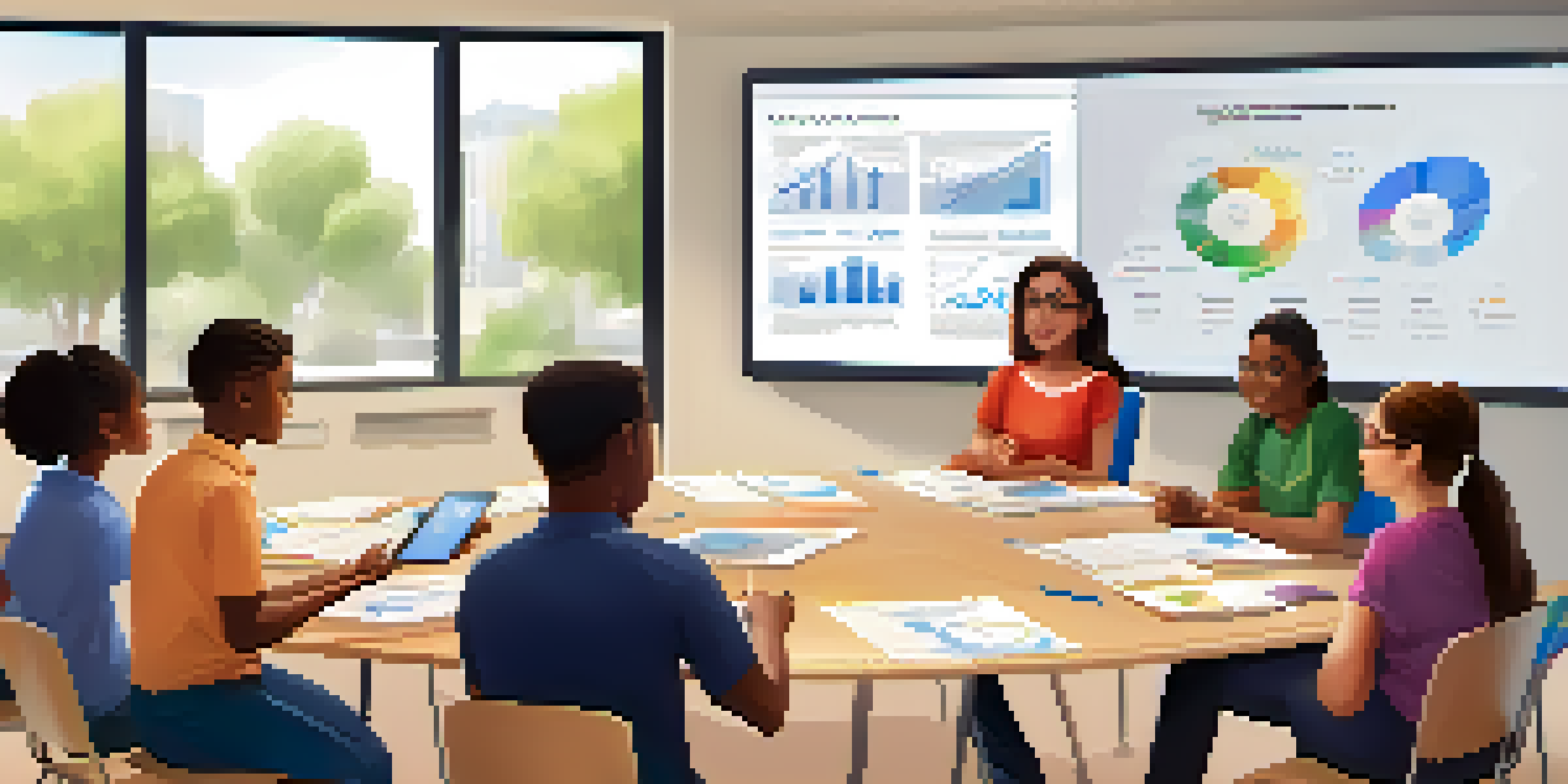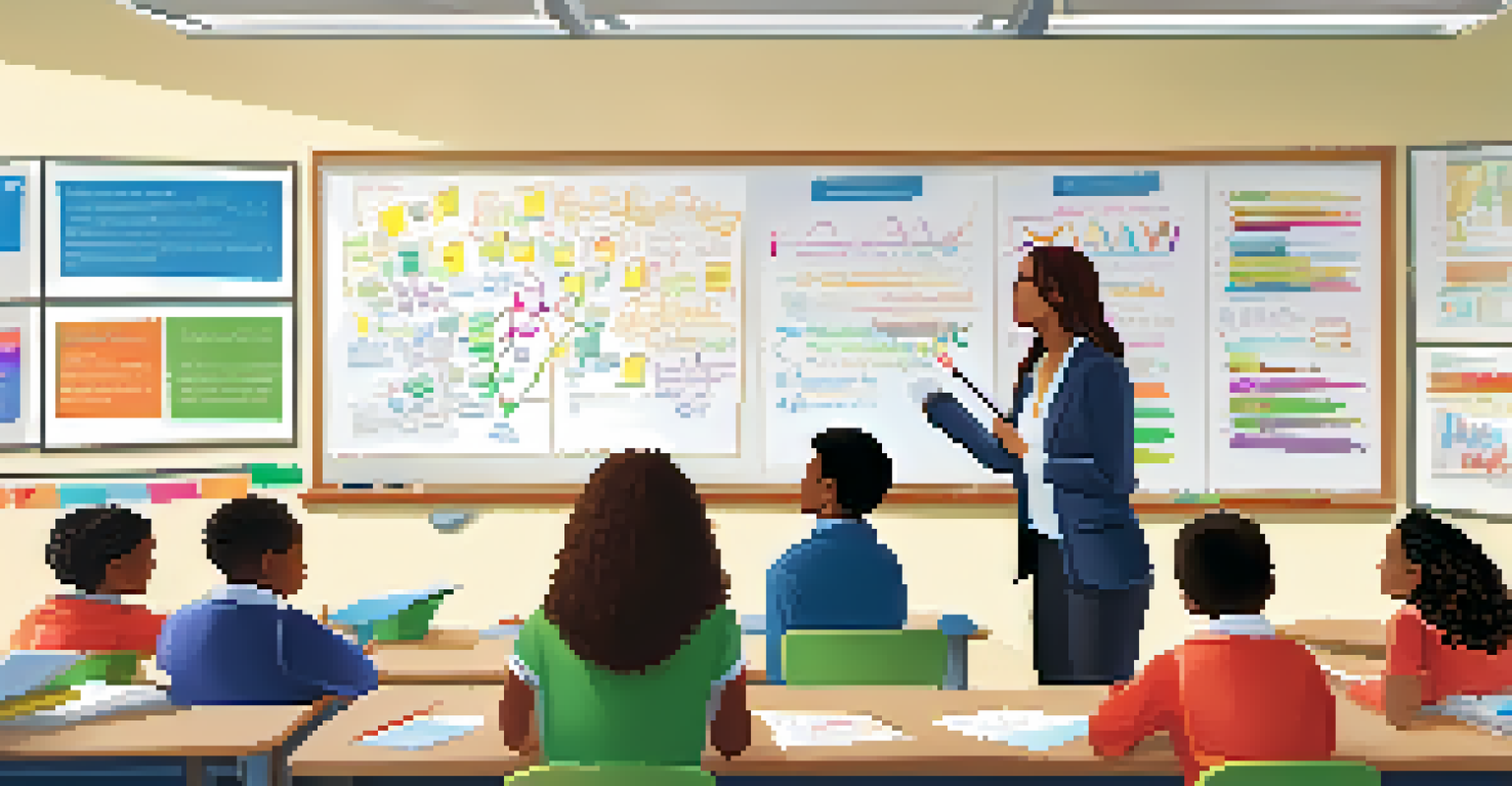Using Learning Analytics to Identify Learning Gaps

What Are Learning Analytics and Their Importance?
Learning analytics refers to the measurement, collection, analysis, and reporting of data about learners and their contexts. This process helps educators understand how students learn and where they struggle. Essentially, it’s about gathering insights to enhance the learning experience, making it more tailored and effective for each student.
Data is the new oil. It's valuable, but if unrefined it cannot really be used.
By leveraging learning analytics, educators can pinpoint specific areas where students may be lagging behind. For instance, if a significant number of students perform poorly in a particular topic, it signals a potential gap in instruction or comprehension. This information is invaluable for shaping curriculum and teaching strategies.
In a world increasingly driven by data, understanding learning analytics is not just beneficial; it’s essential. It empowers educators to make informed decisions, leading to improved student outcomes and more effective teaching methodologies.
How Learning Analytics Reveals Learning Gaps
Learning analytics employs various tools and techniques to track student performance over time. For example, by analyzing quiz scores, assignment submissions, and participation rates, educators can identify which concepts students struggle with the most. This analysis goes beyond mere numbers, providing context for why these gaps exist.

Consider a classroom where students excel in theoretical knowledge but falter in practical applications. Learning analytics can highlight this discrepancy, prompting educators to adjust their approach. Perhaps hands-on projects or simulations could bridge the gap, enhancing understanding and retention.
Learning Analytics Enhances Education
By collecting and analyzing data on student performance, educators can tailor their teaching strategies to improve learning outcomes.
Ultimately, the insights gained from learning analytics serve as a roadmap for educators. By understanding where students are struggling, they can tailor their teaching methods to address those specific learning gaps, fostering a more supportive educational environment.
The Role of Data in Personalized Learning
Personalized learning is all about tailoring education to meet individual student needs. Learning analytics plays a vital role in this process by providing the data necessary to understand each student's unique learning journey. This data allows educators to customize lessons, assignments, and resources to better support their students.
You can’t improve what you don’t measure.
For instance, if analytics indicate that a student consistently struggles with math concepts, a teacher can offer targeted resources or one-on-one tutoring sessions. This personalized approach not only helps fill learning gaps but also boosts student confidence and engagement. Students are more likely to thrive when they feel their specific needs are being addressed.
Moreover, by continuously monitoring student progress through analytics, educators can make real-time adjustments to their teaching strategies. This dynamic approach ensures that learning remains relevant and effective, ultimately leading to better educational outcomes.
Using Predictive Analytics to Anticipate Challenges
Predictive analytics takes learning analytics a step further by using historical data to anticipate future challenges. By identifying patterns in student performance, educators can predict who might struggle in upcoming topics or courses. This proactive approach allows for timely interventions, preventing small gaps from widening into significant learning obstacles.
For example, if data shows that students who score below a certain threshold in early assessments tend to struggle later, educators can implement support strategies right away. This might include additional resources, peer mentoring, or modified instructional techniques designed to bolster understanding.
Predictive Analytics Prevents Issues
Utilizing historical data allows educators to foresee potential learning challenges and implement timely interventions to support students.
Ultimately, predictive analytics empowers educators to act before issues arise, fostering a more supportive learning environment. By staying one step ahead, they can enhance student success and ensure that learning gaps are addressed before they become barriers to achievement.
Engaging Students with Data-Driven Insights
Involving students in the learning analytics process can significantly enhance their motivation and engagement. When students understand how their data reflects their learning journey, they can take ownership of their education. This transparency encourages them to set goals and work towards improving their performance.
For instance, providing students with access to their assessment results and analytics can inspire them to reflect on their strengths and weaknesses. They might discover that they excel in certain areas but need to focus on others, allowing for targeted self-improvement. This self-awareness is crucial for lifelong learning.
Moreover, when students actively participate in discussions about their learning data, it fosters a collaborative environment. They can share strategies, support one another, and collectively work towards overcoming learning gaps, creating a community of learners focused on success.
Collaborating with Educators to Bridge Learning Gaps
Collaboration among educators is key when it comes to effectively using learning analytics. Sharing insights and strategies can lead to more comprehensive approaches to addressing learning gaps. For example, teachers can come together to analyze data trends and develop targeted interventions that benefit all students.
Consider a scenario where multiple educators notice similar gaps in different subjects. By collaborating, they can create interdisciplinary lessons that reinforce concepts across the curriculum, providing students with a more cohesive learning experience. This teamwork not only enhances student understanding but also fosters a sense of community among educators.
Collaboration Boosts Learning Success
When educators share insights and work together, they can develop comprehensive strategies to address learning gaps more effectively.
Ultimately, a collaborative approach encourages continuous improvement in teaching practices. When educators share their experiences and insights, they can develop innovative solutions to bridge learning gaps, ensuring that every student has the opportunity to succeed.
Measuring Success: Evaluating the Impact of Interventions
Once interventions are in place to address learning gaps, it’s crucial to measure their effectiveness. Learning analytics provides the tools needed to assess whether these strategies are making a difference. By comparing student performance before and after implementing specific interventions, educators can gauge their impact.
For example, if a new tutoring program is introduced, analyzing student data can reveal whether participants show improvement compared to their peers. This evaluation not only helps in understanding the success of the intervention but also guides future decisions about resource allocation and program development.

Moreover, ongoing evaluation fosters a culture of accountability and improvement. When educators regularly assess the outcomes of their strategies, they can refine their approaches, ensuring that student needs are continually met and learning gaps are effectively bridged.